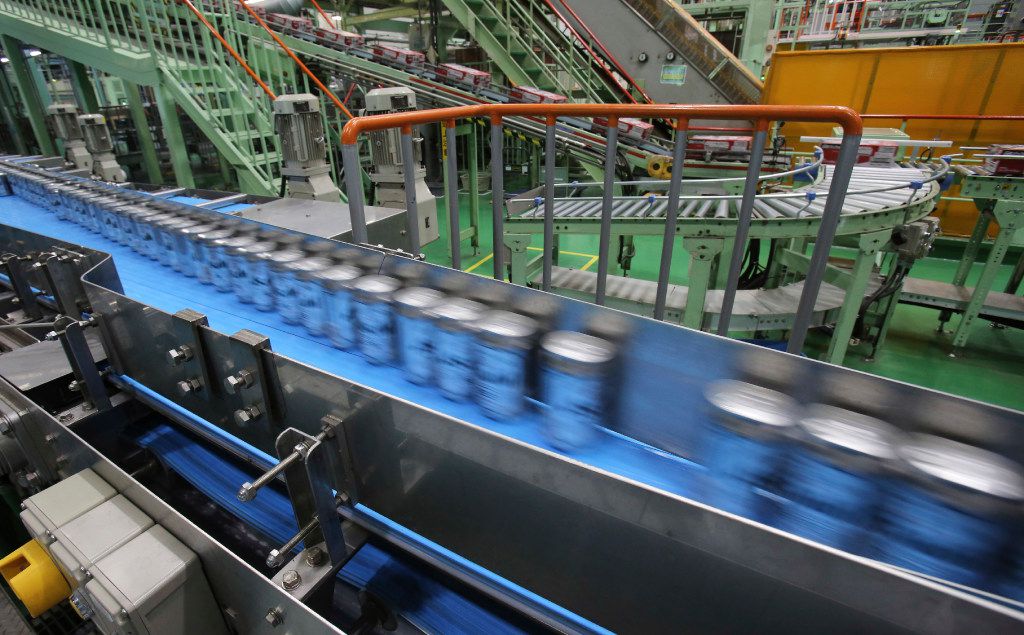TPM (Total Productive Maintenance) is a methodology widely used in production to maintain and improve production and quality systems. Total Productive Maintenance consists of various components, also known as pillars. In total, there are 8 TPM pillars. These ‘8 pillars of TPM’ each delve deeper into an important theme for the factory. In this blog, we discuss all the TPM pillars and the reason they are essential for an optimal production process.
Pillar 1: Focused improvement
In this first TPM pillar, the focus is on analysing problems and identifying their root causes. By having employees from different departments within the organization work proactively together on continuous improvement, (recurring) problems are recognized and resolved more quickly. To analyse problems and determine the root causes, brainstorming sessions, flowcharts, and planned maintenance analyses can be employed. Ishikawa diagrams, also known as fishbone diagrams, are also frequently used for this first TPM pillar.
Pillar 2: Autonomous maintenance
Of all the TPM pillars, this second pillar places the greatest responsibilities in the hands of the operator: autonomous maintenance. By increasing the knowledge and scope of tasks around the machines, operators become more involved in routine maintenance. As a result, emerging problems are recognized earlier, and operators’ technical knowledge grows. Maintenance experts can then focus on more complex maintenance tasks. After all, simpler maintenance tasks, such as cleaning, lubrication, and inspection of machines, can be carried out by the operators themselves!
Pillar 3: Planned maintenance
Regular maintenance tasks are generally easy to schedule. TPM pillar 3 focuses on this planned maintenance. The goal here is to limit costs by preventing unexpected malfunctions (which can lead to machine downtime). To optimize planned maintenance, operators must be offered the right knowledge and guidance. It is also advisable to have a calendar where scheduled preventive maintenance is listed. By delving deeper into planned maintenance as an organization, wear patterns and inventory levels can be predicted and tracked more effectively.
Pillar 4: Education & training
All TPM pillars are, in some way, connected to this fourth pillar. After all, if you strive for continuous improvement, you must keep learning. Education and training for operators, maintenance personnel, and management help with the timely identification of problems, standardization of routine maintenance, and execution of proactive and preventive maintenance. With the right education and training, the necessary knowledge is developed to achieve TPM goals. This can be facilitated through interactive training sessions, courses from external training organizations, or personalized development plans. Additionally, leveraging individual knowledge is crucial. The older generation can share valuable hands-on experience, while the younger generation can support their senior colleagues with digital advancements. By continuously learning together and motivating one another, your organization remains a strong environment for onboarding a new generation of operators.
Pillar 5: Early management
As the name suggests, this TPM pillar ensures that you stay ahead by focusing on the early stages of process and equipment development. Early management is all about optimizing design procedures for introducing new installations or products. Other TPM pillars, such as autonomous maintenance, provide the necessary knowledge and insights to implement early management as effectively as possible. The objective is to introduce new products or machines as quickly and efficiently as possible – at minimal cost, with high quality, fast production speeds, and maximum reliability. By applying this pillar, new products or machines can reach their desired performance levels more rapidly and with fewer startup issues. This ultimately leads to smoother implementation, fewer inefficiencies, and improved performance management results.
Pillar 6: Quality management
By standardizing quality levels, defects and associated costs are significantly reduced. Identifying and addressing these shortcomings in a timely manner ensures better performance during audits and other inspection moments. In this way, quality management eliminates unnecessary expenses, enhances customer satisfaction, and improves the overall efficiency of the production process. However, quality is not only about product standards. It also relates to safety, the environment, and a positive working environment. We will explore these aspects further in pillar 7.
Pillar 7: Safety, health, well-being & environment
Some TPM pillars go hand in hand, and this is especially true for the previous pillar (quality management) and Pillar 7. While quality management plays a key role in audit preparation, this pillar focuses entirely on HSE: Health, Safety & Environment. However, it goes even further by also incorporating environmental considerations into its scope. This pillar is not just about machines but also about the people operating them. It assigns responsibility to everyone regarding workplace safety and raises awareness among employees about environmental issues. On a smaller scale, it also encourages employees to maintain a safe and organized workspace, fostering a culture of responsibility and care within the organization.
Pillar 8: TPM in the office
The TPM pillars do not stop at the production floor. Efficiency in administrative tasks is just as crucial. Especially in logistics and planning departments, there are often inefficiencies that can be eliminated, saving both time and costs. By streamlining workflows and reducing unnecessary paperwork and archiving, information can be delivered at the right time, in the right format, and at minimal cost to where it is needed most. A key element in achieving this is the Gemba Walk. Management should actively visit the production floor to observe firsthand what is truly needed and valued by employees.
Implementing TPM in your factory with the EZ-GO platform
With the EZ-GO platform, operators gain direct access to visual work instructions, checklists, and results. This digital standardization significantly improves maintenance efficiency, reduces errors, and helps prevent breakdowns. Additionally, by submitting reports and improvement proposals, a faster and stronger connection is established between the production floor and management. EZ-GO provides essential support for maximizing the potential of all 8 TPM pillars within your organization. Curious to see it in action and how your processes and task management can be visualized? Request a free demo today and experience the benefits of EZ-GO for yourself!


